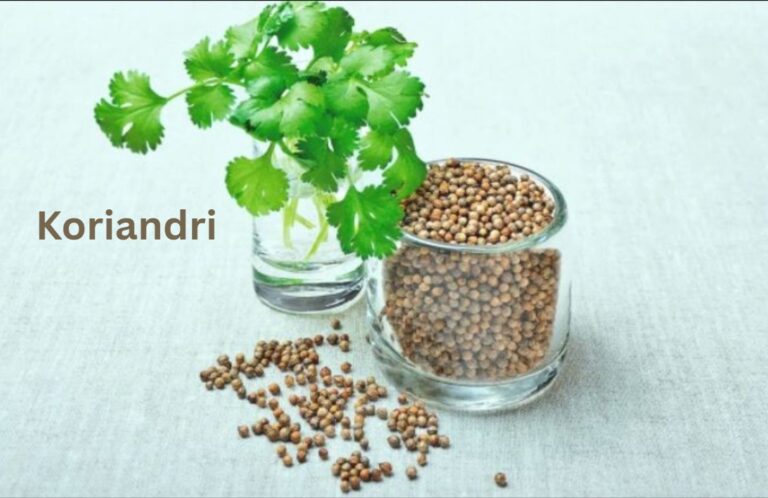
Koriandri
Koriandri, known globally as coriander and sometimes as cilantro or dhania, is a versatile herb and spice cherished in kitchens and traditional medicine alike. Both its fresh leaves and dried seeds have earned a reputation for their distinct aroma, earthy-citrus flavor, and impressive nutritional and medicinal properties. From ancient civilizations to modern gastronomy, Koriandri’s journey is as rich and flavorful as the herb itself.
Understanding Koriandri: What It Really Is
Koriandri (Coriandrum sativum) is a soft, annual herb in the Apiaceae family, the same botanical group as parsley, dill, and cumin. Every part of the plant — from root to seed — offers something unique.
The leaves (commonly called cilantro in North America) add a burst of freshness to salads, curries, and soups. The seeds, dried and ground, deliver a warm, nutty, and slightly citrus flavor used in spice blends like garam masala and curry powder.
This dual identity often confuses newcomers. In many regions, Koriandri refers to the seeds, while cilantro means the leaves — but both come from the same plant.
The History and Global Journey of Koriandri
Koriandri’s history stretches back over 7,000 years. Archaeological findings in Israel and ancient Egyptian tombs reveal that coriander was cultivated and valued for both flavor and healing properties. The ancient Greeks and Romans used coriander as a culinary spice and even in perfumes due to its pleasant, complex scent.
When trade routes expanded, coriander spread across Asia, Africa, and the Americas, embedding itself into countless culinary traditions. In India, it became a cornerstone of spice blends; in Latin America, its fresh leaves became synonymous with vibrant, flavorful cuisine.
Today, Koriandri is cultivated in nearly every continent, with India, Morocco, and Russia among the leading producers.
Botanical Profile: The Science Behind Koriandri
| Attribute | Description |
|---|---|
| Scientific Name | Coriandrum sativum |
| Family | Apiaceae |
| Common Names | Koriandri, Coriander, Cilantro, Dhania |
| Origin | Mediterranean and Middle Eastern regions |
| Plant Type | Annual herb |
| Height | 30–60 cm |
| Parts Used | Leaves, seeds, stems, and roots |
| Flavor Profile | Citrusy, nutty, warm, slightly peppery |
| Primary Compounds | Linalool, geraniol, borneol, and camphor |
These compounds, especially linalool, contribute not only to Koriandri’s signature aroma but also to its potential health benefits — from aiding digestion to fighting inflammation.
Nutritional Value and Health Benefits of Koriandri
Koriandri is more than just a flavor enhancer; it’s a nutritional powerhouse. It’s low in calories yet rich in vitamins, antioxidants, and essential oils that contribute to wellness.
| Nutrient | Amount (per 100g fresh leaves) | Health Benefit |
|---|---|---|
| Vitamin C | 27 mg | Boosts immunity, acts as antioxidant |
| Vitamin A | 6748 IU | Promotes eye and skin health |
| Vitamin K | 310 µg | Supports bone and blood health |
| Calcium | 67 mg | Strengthens bones and teeth |
| Potassium | 521 mg | Regulates blood pressure |
| Fiber | 3.3 g | Aids digestion |
| Iron | 1.8 mg | Prevents anemia |
1. Digestive Support
Koriandri seeds contain natural oils that promote enzyme secretion and stimulate digestion. It’s often used in traditional Ayurvedic and Chinese medicine to ease bloating, nausea, and indigestion.
2. Blood Sugar Regulation
Several studies have shown that coriander seed extract can help lower blood sugar levels by stimulating insulin activity. According to a 2011 study in Food Chemistry, coriander improved glucose metabolism in diabetic rats — a promising finding for future human research.
3. Anti-Inflammatory Properties
The essential oil components, particularly linalool and borneol, have demonstrated anti-inflammatory effects. They may help reduce arthritis pain, headaches, and even skin irritation caused by allergies.
4. Detoxification and Heavy Metal Removal
Koriandri’s chelating properties enable it to bind heavy metals like lead and mercury, helping flush them from the body — an effect supported by small-scale studies in environmental medicine.
5. Heart and Brain Health
Rich in antioxidants, coriander helps combat oxidative stress, potentially lowering cholesterol and supporting cognitive health. Some studies suggest its compounds may help protect brain cells from age-related damage.
6. Antimicrobial and Antifungal Activity
Extracts from Koriandri seeds have been found to inhibit the growth of certain bacteria, including Salmonella and E. coli, as well as common fungal strains. This makes it a natural preservative in some food industries.
Culinary Uses of Koriandri Around the World
Koriandri plays a vital role in global cuisine due to its versatile flavor profile.
In Indian Cooking
Ground coriander seeds are fundamental in Indian spice blends. The fresh leaves garnish everything from curries to chutneys. Dhania chutney — made with Koriandri, green chili, and lemon — is a staple accompaniment to countless dishes.
In Mexican Cuisine
Known as cilantro, it’s essential in guacamole, tacos, and salsa. Its sharp, fresh flavor balances the richness of beans, meat, and avocado.
In Middle Eastern and Mediterranean Dishes
Coriander seeds flavor stews, falafels, and marinades. Combined with cumin, it delivers warmth and complexity to spice rubs and soups.
In Asian Cuisine
In Thai, Chinese, and Vietnamese cooking, Koriandri leaves and roots add fragrance to soups, broths, and stir-fries. The roots are often crushed with garlic to form the base of aromatic pastes.
Growing and Harvesting Koriandri
Koriandri thrives in temperate climates with well-drained soil and plenty of sunlight. It prefers cool weather and can be grown in containers or garden beds.
Planting tips:
- Sow seeds directly in soil rather than transplanting.
- Maintain moist but not waterlogged conditions.
- Harvest leaves early for tender, aromatic flavor.
- Allow some plants to flower and produce seeds for next season’s crop.
After flowering, seeds mature and can be dried for spice production or regrown. The entire growth cycle typically lasts 45–70 days.
Economic and Market Value of Koriandri
| Category | Details |
|---|---|
| Global Production (2024) | ~900,000 metric tons |
| Leading Producers | India, Russia, Morocco, Canada |
| Export Market Value | Estimated USD 1.4 billion |
| Major Importers | USA, UK, Germany, Japan |
| Average Seed Price | $1,200 per metric ton |
| Herb Market Growth (CAGR) | 5.3% (2023–2028 forecast) |
While it’s not an individual’s net worth, this table effectively represents Koriandri’s global economic worth, reflecting its immense value in agriculture, culinary trade, and health industries.
Scientific Studies and Evidence-Based Insights
Numerous peer-reviewed studies validate Koriandri’s medicinal claims:
- Antioxidant properties: Research in Journal of Food Science (2012) found coriander seed extracts reduced oxidative stress markers by 30%.
- Antimicrobial activity: International Journal of Food Microbiology (2015) documented that coriander essential oil inhibited Listeria monocytogenes in meat products.
- Cholesterol reduction: A Journal of Environmental Biology study (2011) showed coriander seed powder reduced LDL cholesterol in rats by 25%.
- Heavy metal detoxification: Environmental Health Perspectives (2013) reported coriander aided in removing lead from animal tissue.
These findings highlight Koriandri’s growing recognition in scientific nutrition and phytomedicine.
Potential Side Effects and Precautions
While Koriandri is generally safe, a few points warrant attention:
- Allergic reactions: Some individuals experience skin irritation or nausea from coriander oil or leaves.
- Medication interactions: Its natural hypoglycemic effect can enhance diabetes medications. Consult a doctor if you’re on insulin or metformin.
- Pregnancy considerations: Large doses of coriander supplements are not recommended during pregnancy due to limited safety data.
In moderation as food, however, Koriandri remains one of the safest and healthiest herbs available.
Sustainability and Environmental Impact
Koriandri’s cultivation has a relatively low ecological footprint. It requires minimal fertilizers, thrives in diverse soils, and supports pollinators like bees during flowering. Organic farming practices enhance yield quality without chemical residues.
Countries like India and Morocco have adopted sustainable coriander farming programs that minimize pesticide use and promote soil health. Consumers choosing organically grown Koriandri contribute to both health and environmental preservation.
Coriander vs. Cilantro vs. Koriandri: Clearing the Confusion
Though the names vary by region, they refer to the same plant:
| Name | Region/Usage | Part of Plant |
|---|---|---|
| Koriandri | Global/Alternate Name | Both seeds and leaves |
| Coriander | Europe, Asia | Seeds or full plant |
| Cilantro | North America, Latin America | Fresh leaves |
| Dhania | South Asia | Both seeds and leaves |
So whether you sprinkle Koriandri seeds into curry or toss cilantro leaves into salad, you’re enjoying the same ancient herb with modern relevance.
Cooking Tips: How to Use Koriandri for Maximum Flavor
- Add fresh leaves at the end of cooking to preserve aroma.
- Toast seeds lightly before grinding for deeper flavor.
- Combine with spices like cumin, turmeric, and chili for balanced profiles.
- Use roots in marinades or curry pastes for intense earthy notes.
- Pair with citrus, avocado, lentils, or grilled meats for freshness and contrast.
Cultural Symbolism and Traditional Medicine
In Ayurvedic medicine, Koriandri is classified as a “cooling” herb that balances the body’s internal heat. It’s used in detox teas, digestive tonics, and skin treatments.
In traditional Chinese medicine, it’s known for stimulating appetite and promoting qi (energy) flow. Middle Eastern and European folk traditions even associated coriander with love and happiness, using it in ceremonial foods.
Its symbolic versatility — from healing to harmony — mirrors its diverse practical uses.
Modern Applications Beyond the Kitchen
Beyond flavoring, Koriandri is gaining ground in several industries:
- Cosmetics: Coriander essential oil is used in perfumes and skincare for its soothing scent and antibacterial properties.
- Pharmaceuticals: Its extracts are studied for potential roles in anti-diabetic and cholesterol-lowering supplements.
- Food preservation: Natural antimicrobial activity makes it an eco-friendly preservative alternative.
- Aromatherapy: The pleasant, citrus-woody scent is known to ease anxiety and promote relaxation.
How to Store and Preserve Koriandri
- Fresh leaves: Store in a damp paper towel inside an airtight container in the refrigerator.
- Dried seeds: Keep in airtight jars away from light and humidity.
- Ground spice: Use within six months for best flavor.
- Freezing method: Blend with olive oil and freeze into cubes for easy future use.
Proper storage maintains flavor integrity and nutrient content.
Conclusion
Koriandri — whether you call it coriander, cilantro, or dhania — is a global symbol of flavor, health, and heritage. Its unique ability to cross culinary, medicinal, and cultural boundaries makes it one of humanity’s most enduring herbs. From boosting immunity and aiding digestion to elevating everyday dishes, it continues to prove that the simplest natural ingredients can have the greatest impact.
In a world chasing new superfoods, Koriandri remains a timeless classic — grounding us in tradition while supporting modern wellness.
Frequently Asked Questions
1. Is Koriandri the same as cilantro?
Yes. Both come from the Coriandrum sativum plant — Koriandri or coriander usually refers to the seeds, while cilantro means the leaves.
2. What are the main health benefits of Koriandri?
It supports digestion, regulates blood sugar, reduces inflammation, detoxifies the body, and boosts immunity.
3. Can Koriandri help with weight loss?
It may aid digestion and metabolism, but it’s not a magic weight-loss ingredient. Use it as part of a balanced diet.
4. What does Koriandri taste like?
Fresh leaves have a bright, citrusy flavor, while seeds are warm, nutty, and slightly peppery.
5. Why do some people dislike the taste of Koriandri?
Certain genetic variants make its compounds taste like soap to some individuals — a trait identified in OR6A2 gene research.




